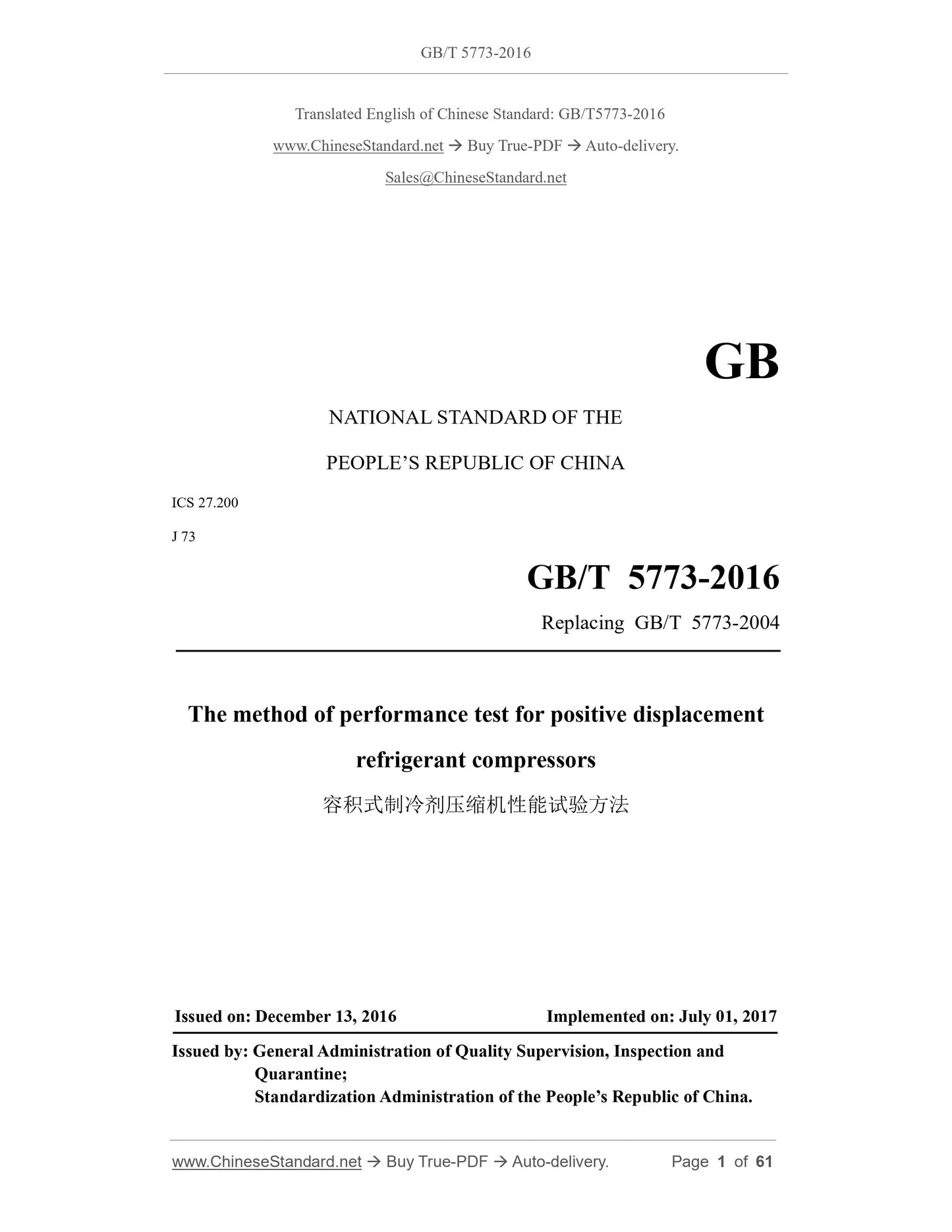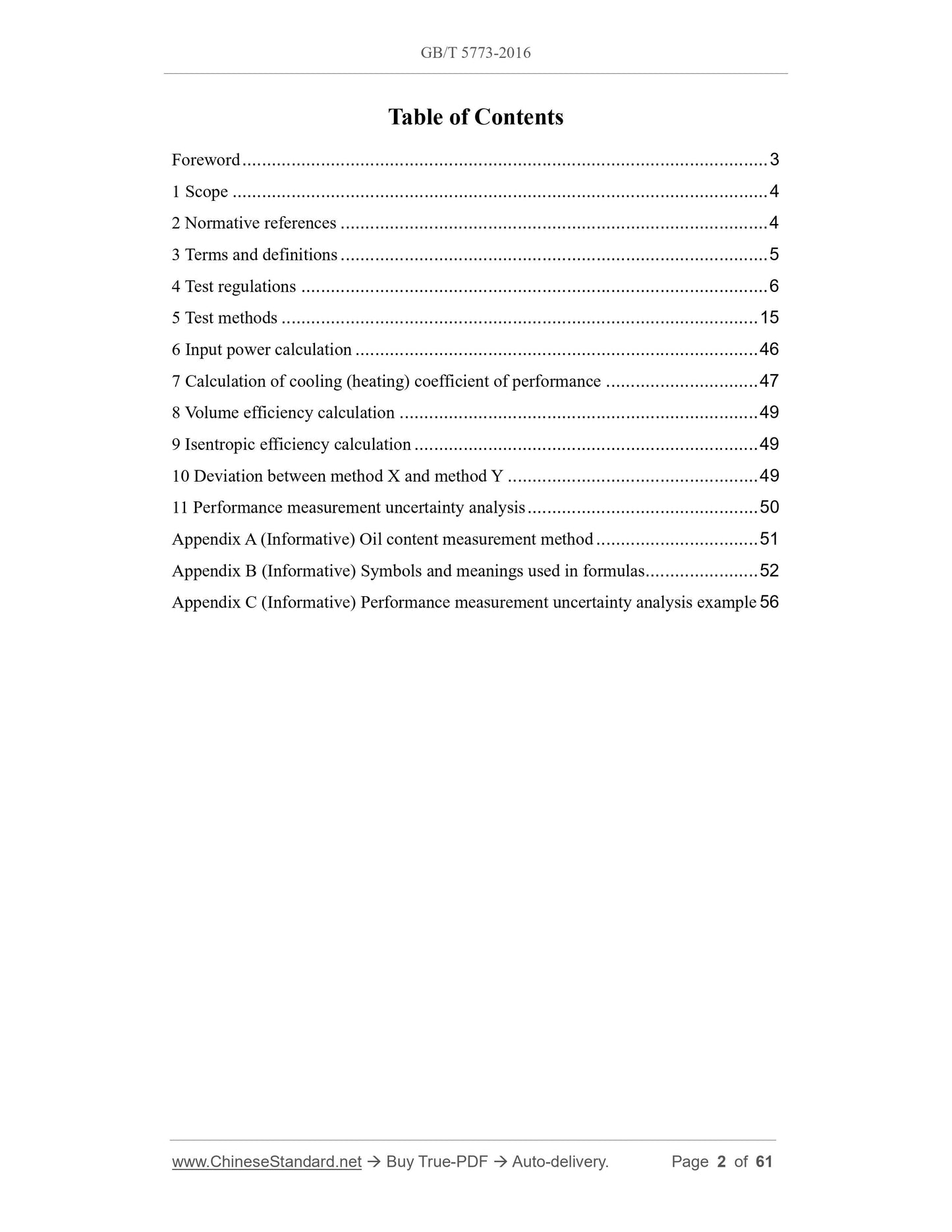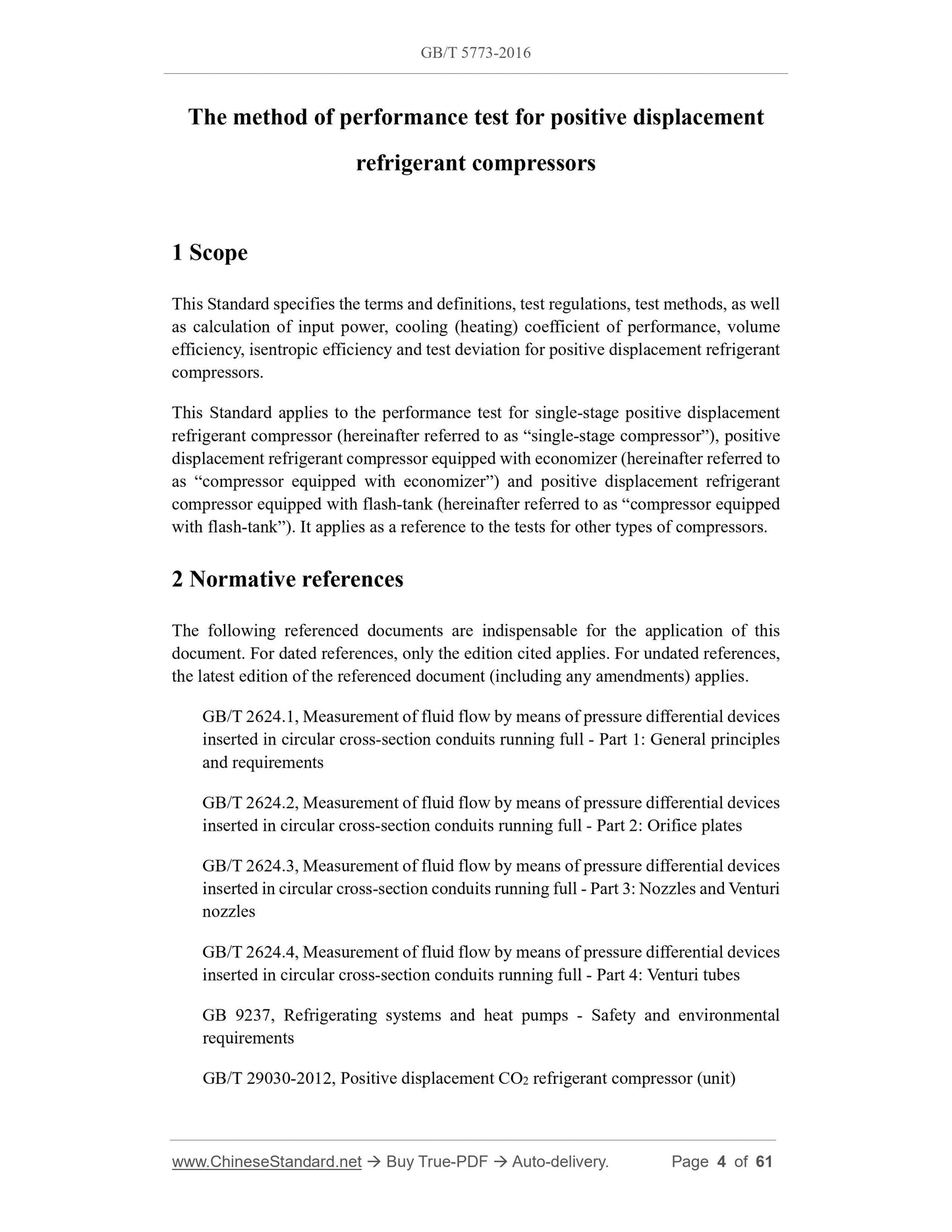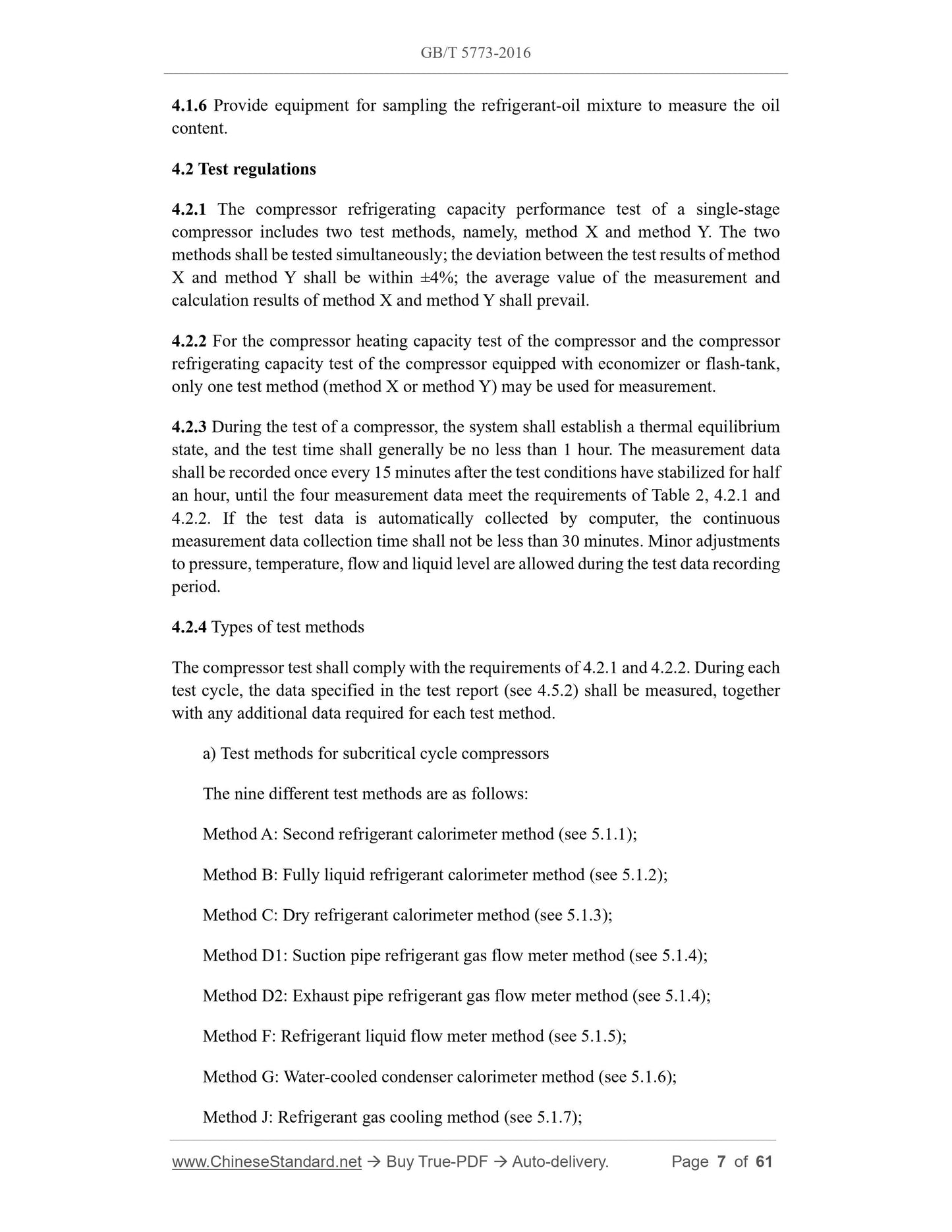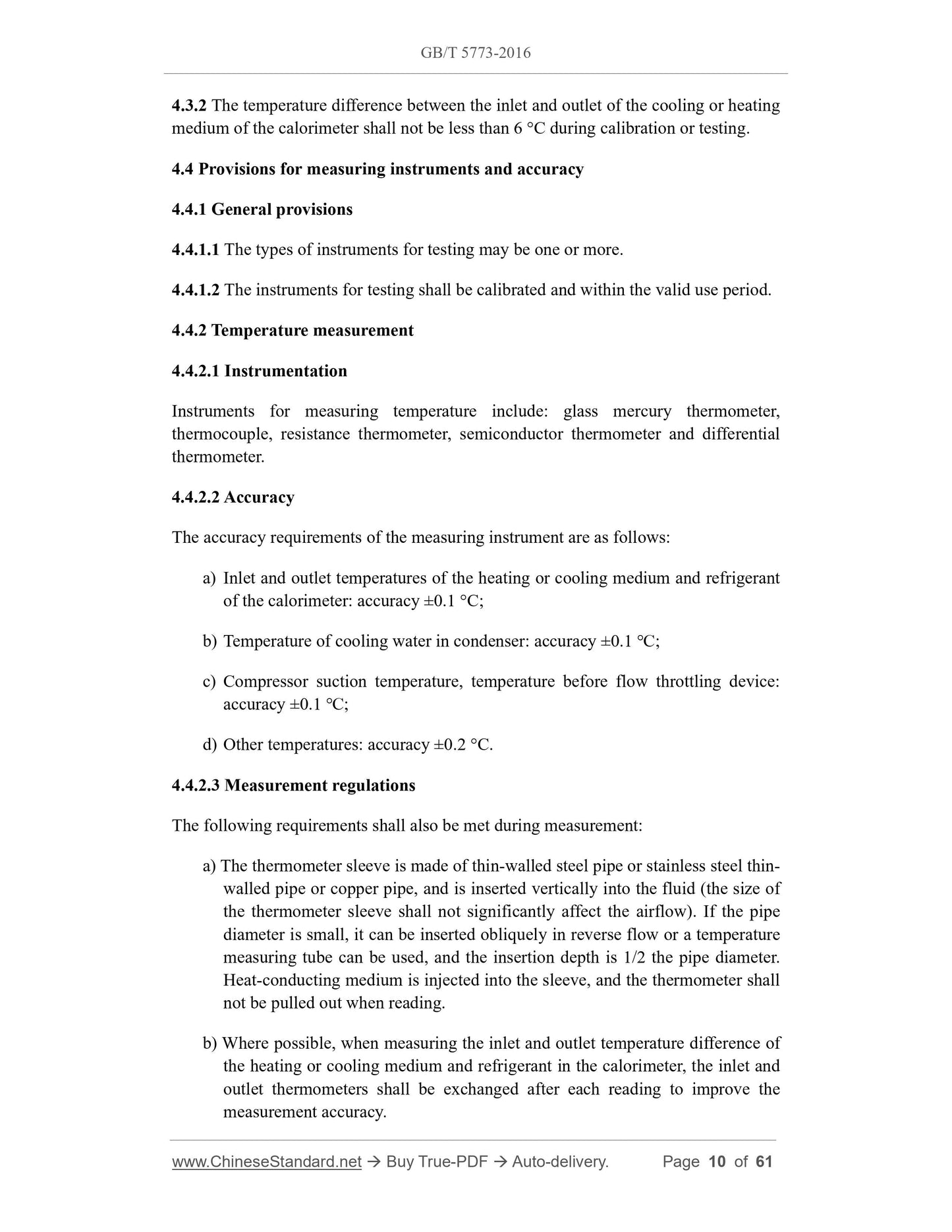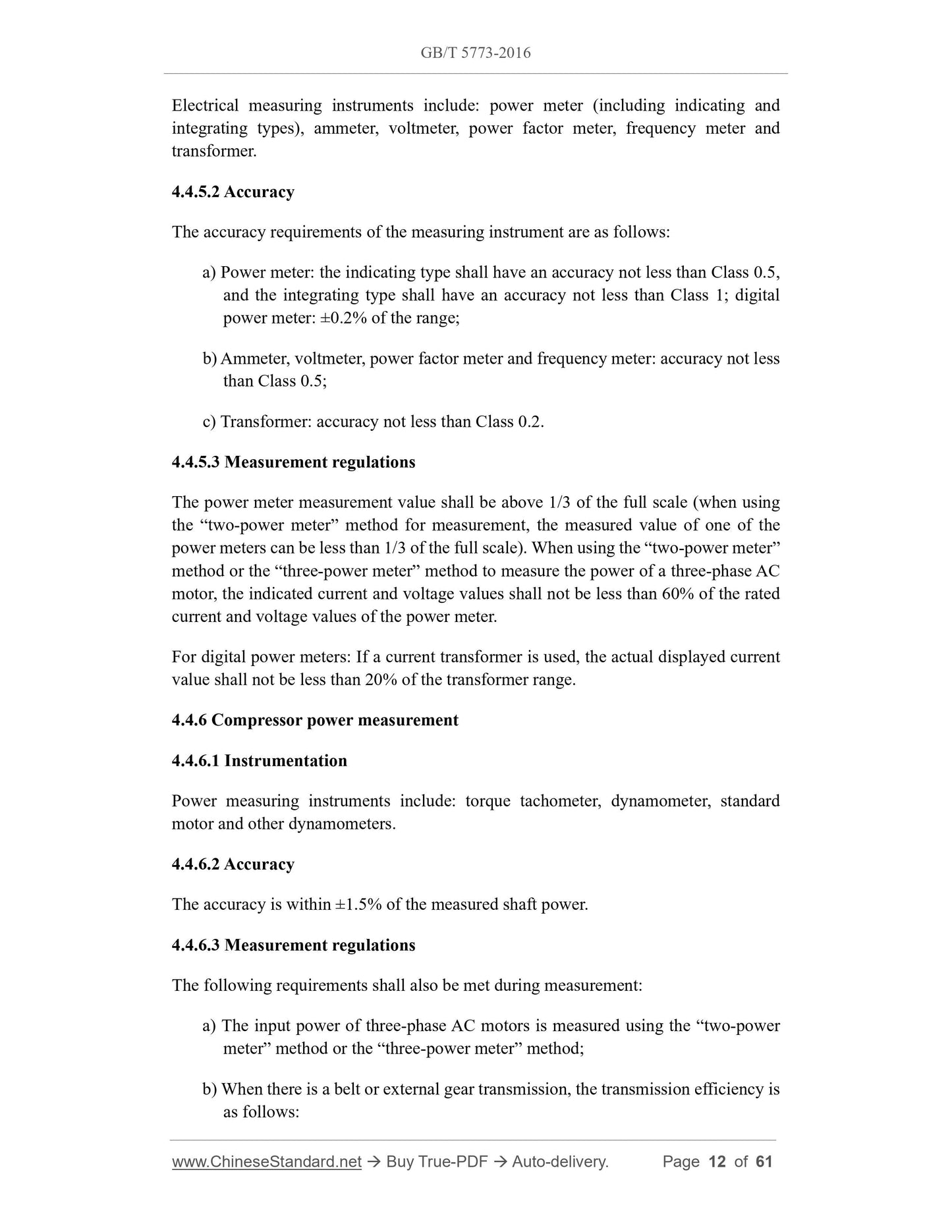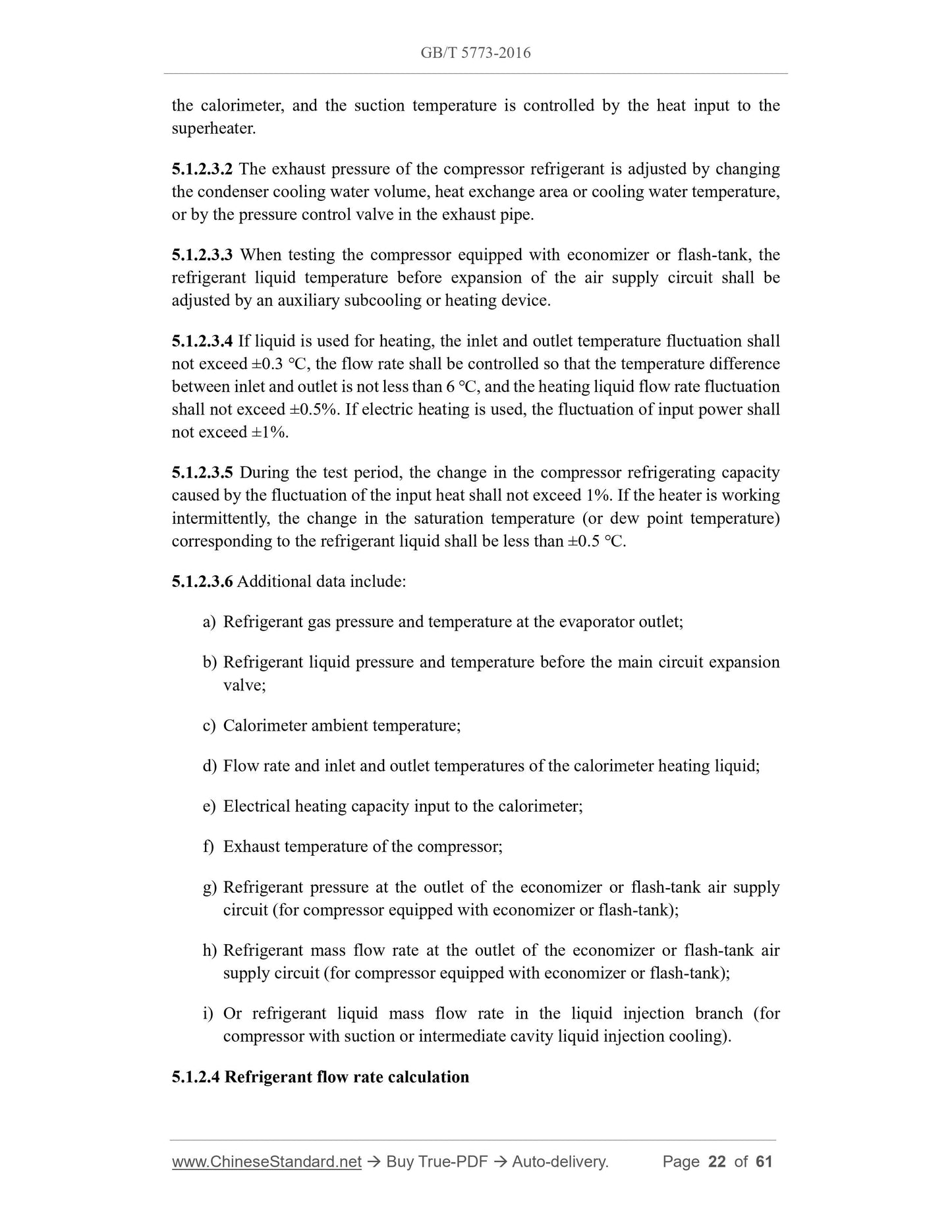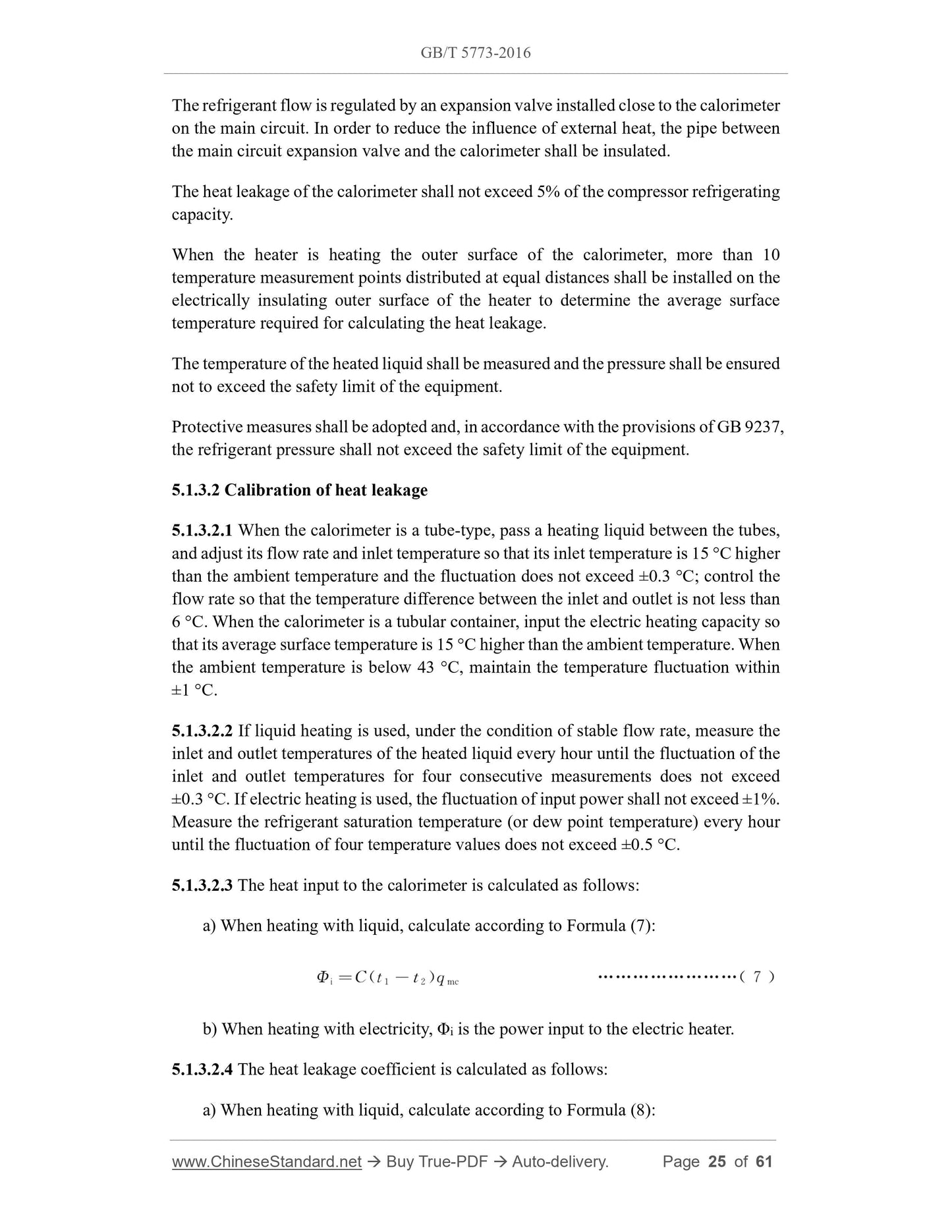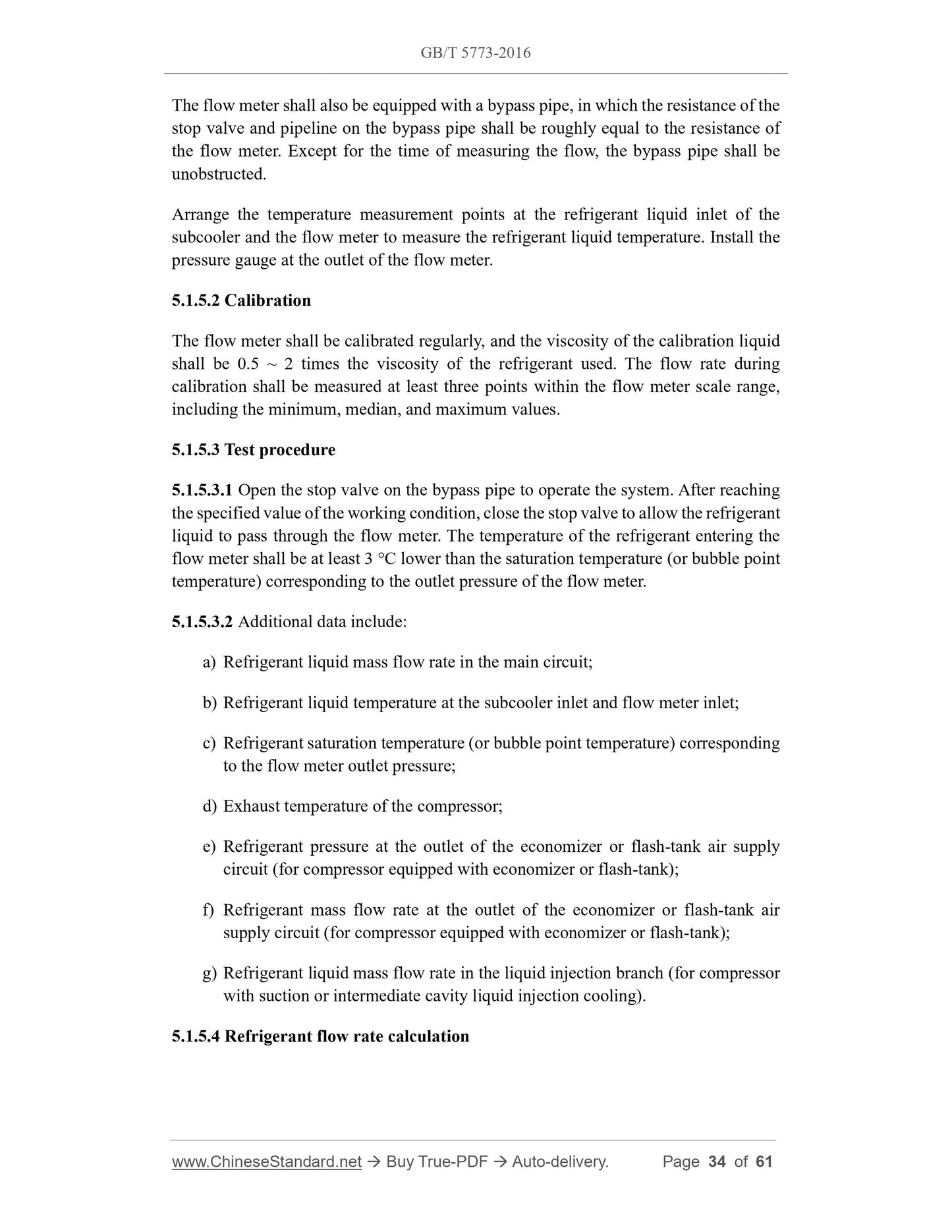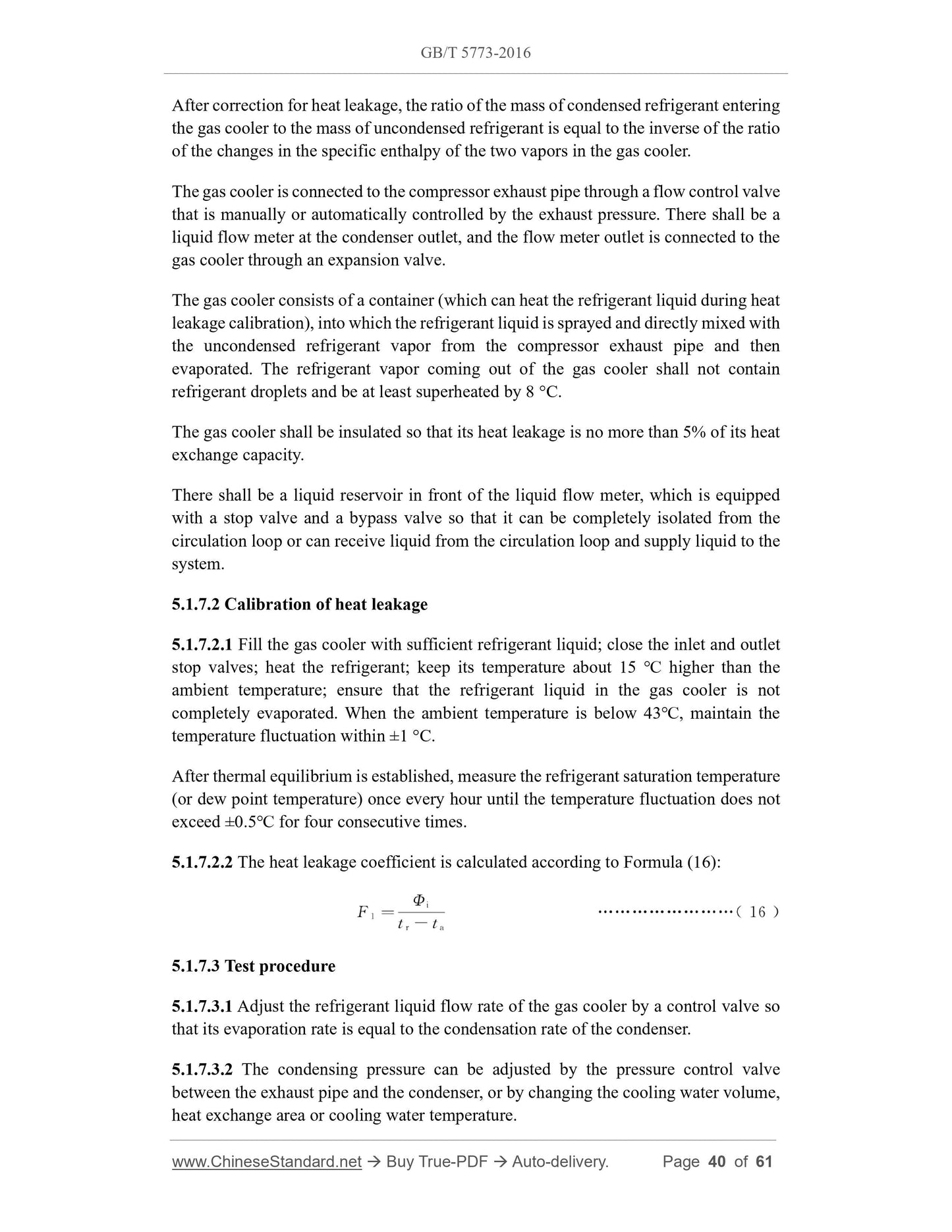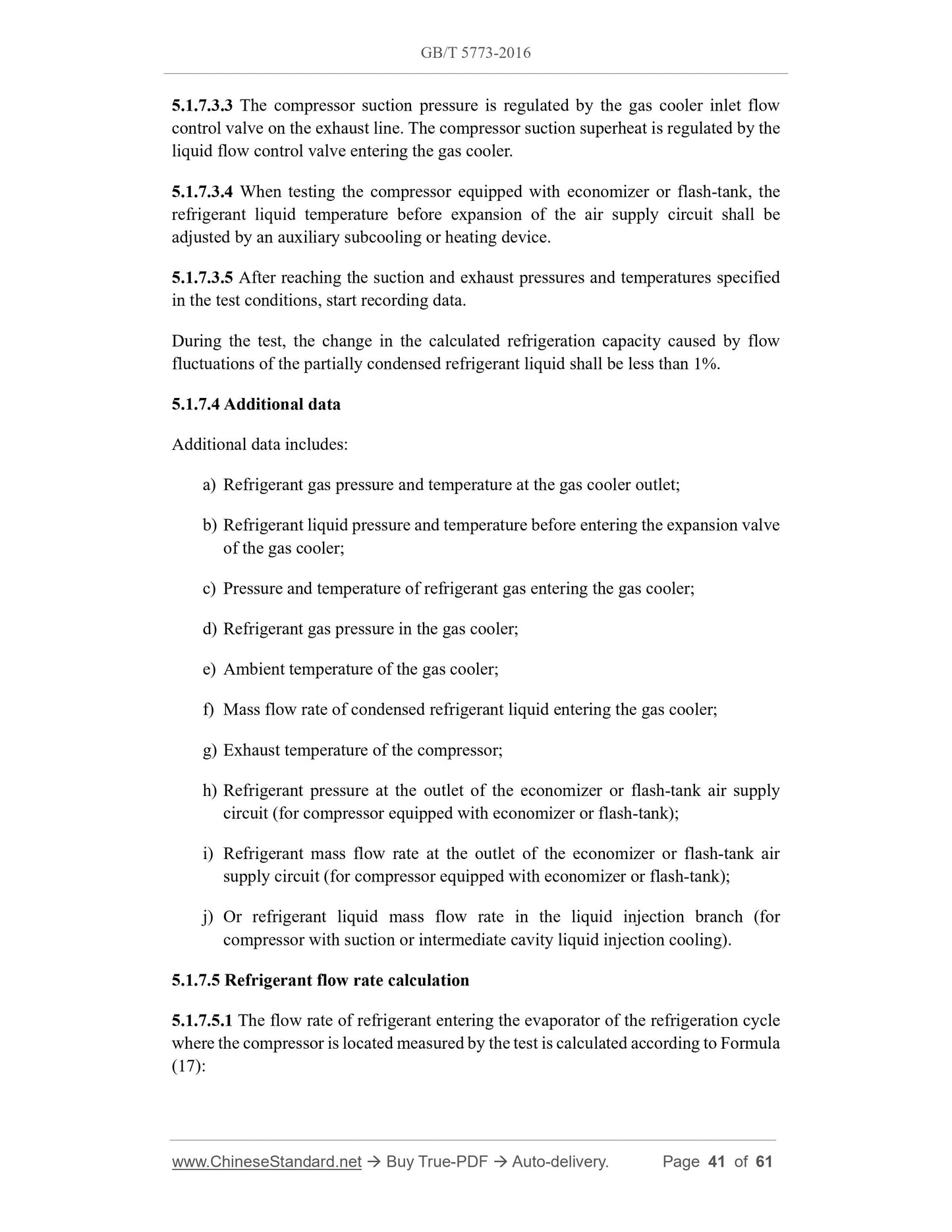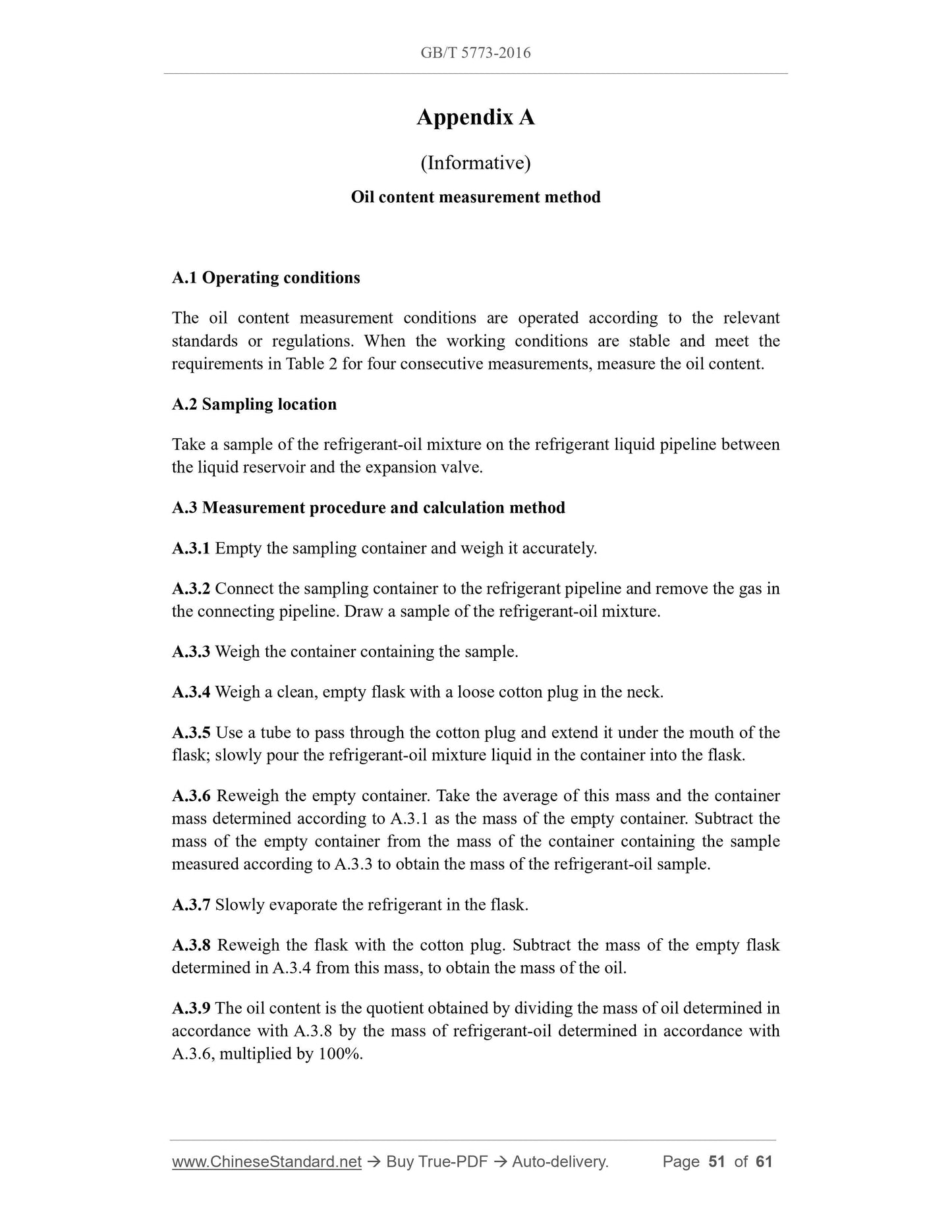1
/
of
12
www.ChineseStandard.us -- Field Test Asia Pte. Ltd.
GB/T 5773-2016 English PDF (GB/T5773-2016)
GB/T 5773-2016 English PDF (GB/T5773-2016)
Regular price
$515.00
Regular price
Sale price
$515.00
Unit price
/
per
Shipping calculated at checkout.
Couldn't load pickup availability
GB/T 5773-2016: The method of performance test for positive displacement refrigerant compressors
Delivery: 9 seconds. Download (and Email) true-PDF + Invoice.Get Quotation: Click GB/T 5773-2016 (Self-service in 1-minute)
Newer / historical versions: GB/T 5773-2016
Preview True-PDF
Scope
This Standard specifies the terms and definitions, test regulations, test methods, as wellas calculation of input power, cooling (heating) coefficient of performance, volume
efficiency, isentropic efficiency and test deviation for positive displacement refrigerant
compressors.
This Standard applies to the performance test for single-stage positive displacement
refrigerant compressor (hereinafter referred to as “single-stage compressor”), positive
displacement refrigerant compressor equipped with economizer (hereinafter referred to
as “compressor equipped with economizer”) and positive displacement refrigerant
compressor equipped with flash-tank (hereinafter referred to as “compressor equipped
with flash-tank”). It applies as a reference to the tests for other types of compressors.
Basic Data
| Standard ID | GB/T 5773-2016 (GB/T5773-2016) |
| Description (Translated English) | The method of performance test for positive displacement refrigerant compressors |
| Sector / Industry | National Standard (Recommended) |
| Classification of Chinese Standard | J73 |
| Classification of International Standard | 27.200 |
| Word Count Estimation | 42,493 |
| Date of Issue | 2016-12-13 |
| Date of Implementation | 2017-07-01 |
| Older Standard (superseded by this standard) | GB/T 5773-2004 |
| Regulation (derived from) | National Standard Notice No.62 of 2016 |
| Issuing agency(ies) | General Administration of Quality Supervision, Inspection and Quarantine of the People's Republic of China, Standardization Administration of the People's Republic of China |
Share
